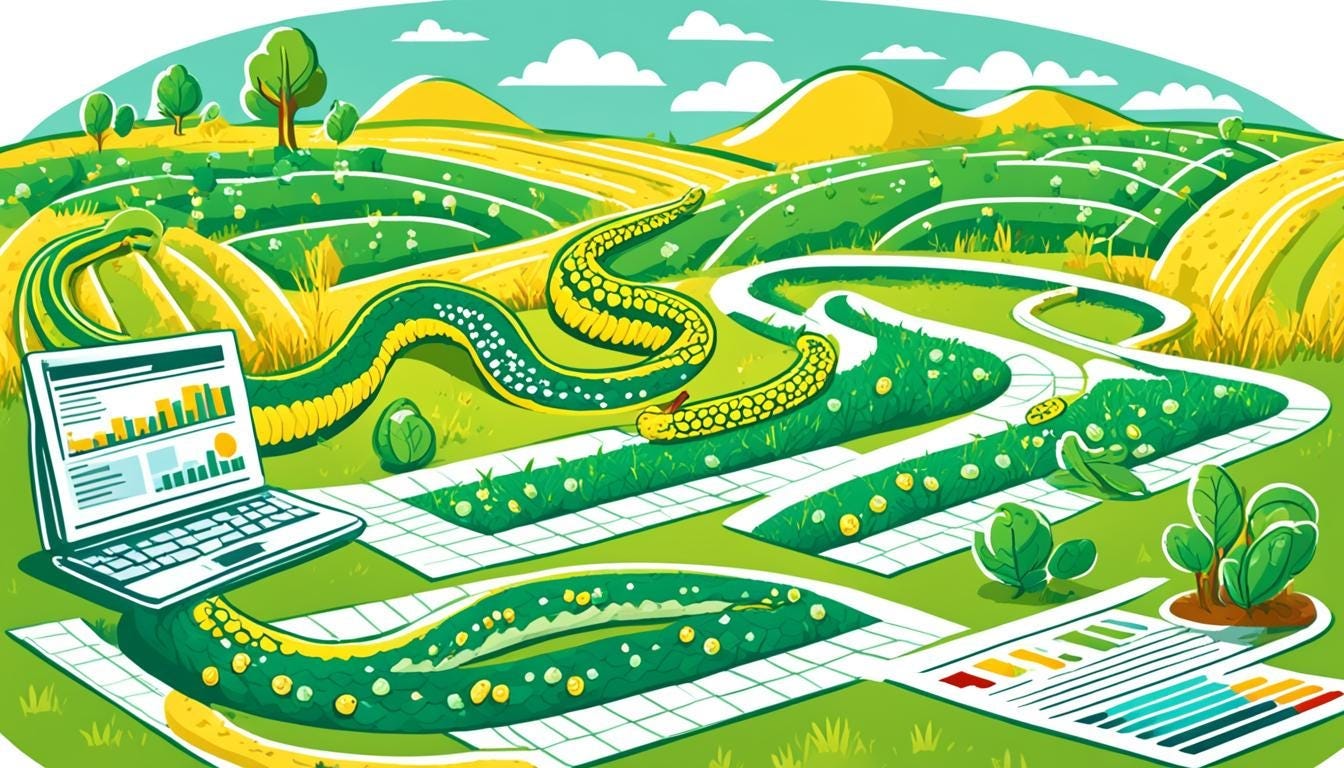
Python Applications in Agriculture: Revolutionizing Pest and Disease Management with Global Mapping Technologies
In the rapidly evolving landscape of agricultural technology, Python has emerged as a powerful tool for addressing some of the most critical challenges faced by farmers and agricultural researchers worldwide. The python application agriculture with global map with pest and disease represents a cutting-edge approach to understanding, predicting, and mitigating agricultural risks on a global scale.
The Growing Importance of Digital Agriculture
Agriculture is no longer just about traditional farming methods. With the world's population expected to reach 9.7 billion by 2050, technology has become crucial in ensuring food security and sustainable agricultural practices. Python, with its versatile libraries and robust data processing capabilities, stands at the forefront of this agricultural digital transformation.
Key Components of Python-Based Agricultural Mapping
1. Data Collection and Integration
Successful agricultural mapping requires comprehensive data collection from multiple sources:
- Satellite imagery
- Ground-based sensors
- Weather stations
- Historical crop records
- Pest and disease databases
Python libraries such as GeoPandas, Shapely, and Rasterio enable seamless integration of these diverse data sources, creating a holistic view of agricultural landscapes.
2. Pest and Disease Detection Technologies
The python application agriculture with global map with pest and disease leverages advanced technologies:
- Machine Learning Models: Utilize libraries like TensorFlow and scikit-learn to develop predictive models
- Image Recognition: OpenCV for detecting early signs of crop diseases
- Geospatial Analysis: Use of GeoPandas for mapping pest distribution
Example Python Code Snippet for Pest Distribution Mapping
import geopandas as gpd import matplotlib.pyplot as plt def map_pest_distribution(pest_data): """ Create a comprehensive visualization of pest distribution """ world = gpd.read_file(gpd.datasets.get_path('naturalearth_lowres')) pest_map = world.merge(pest_data, how='left', left_on=['name'], right_on=['country']) pest_map.plot(column='pest_intensity', cmap='YlOrRd', legend=True, figsize=(15, 10)) plt.title('Global Pest Distribution Intensity') plt.show()3. Real-time Monitoring and Prediction
Python's robust ecosystem enables:
- Time-series Analysis: Tracking pest and disease progression
- Predictive Modeling: Forecasting potential outbreak regions
- Climate Change Impact Assessment: Understanding long-term agricultural risks
Technological Framework for Global Agricultural Mapping
Data Sources and Integration
Successful python application agriculture with global map with pest and disease requires multiple data integration:
- Satellite Imagery: NASA's Earth Observing System
- Climate Databases: NOAA and WorldClim
- Agricultural Research Institutions: FAO, CGIAR
- Local Agricultural Departments
Technological Stack
Recommended Python technologies include:
- Data Processing: Pandas, NumPy
- Visualization: Matplotlib, Plotly
- Machine Learning: scikit-learn, TensorFlow
- Geospatial Analysis: GeoPandas, Shapely
- Web Frameworks: Django, Flask (for deployment)
Challenges and Solutions in Global Agricultural Mapping
Data Limitations
- Inconsistent Data Collection: Develop standardized data collection protocols
- Limited Ground Truth: Combine satellite data with local farmer reports
- Technical Infrastructure: Create low-bandwidth solutions for remote regions
Privacy and Ethical Considerations
- Anonymize individual farmer data
- Ensure transparent data usage policies
- Obtain necessary permissions for data collection
Future Prospects
The python application agriculture with global map with pest and disease is poised to transform:
- Precision Agriculture: Targeted intervention strategies
- Climate Resilience: Adaptive farming techniques
- Global Food Security: Proactive pest management
Emerging Trends
- AI-Powered Prediction Models
- Blockchain for Transparent Data Sharing
- IoT Integration for Real-time Monitoring
Conclusion
Python's versatility in developing agricultural mapping solutions offers unprecedented opportunities to address global agricultural challenges. By combining advanced technologies, comprehensive data analysis, and innovative approaches, we can create more resilient and sustainable agricultural systems.
Call to Action
Researchers, agricultural technologists, and policymakers must:
- Invest in digital agricultural technologies
- Support open-source development
- Collaborate across global platforms
References
- Food and Agriculture Organization (FAO) Reports
- Global Agricultural Monitoring Research Papers
- Climate Change Impact Studies
- Open-source Agricultural Technology Conferences
Note: This article provides a foundational understanding of Python's role in agricultural mapping and pest management.
